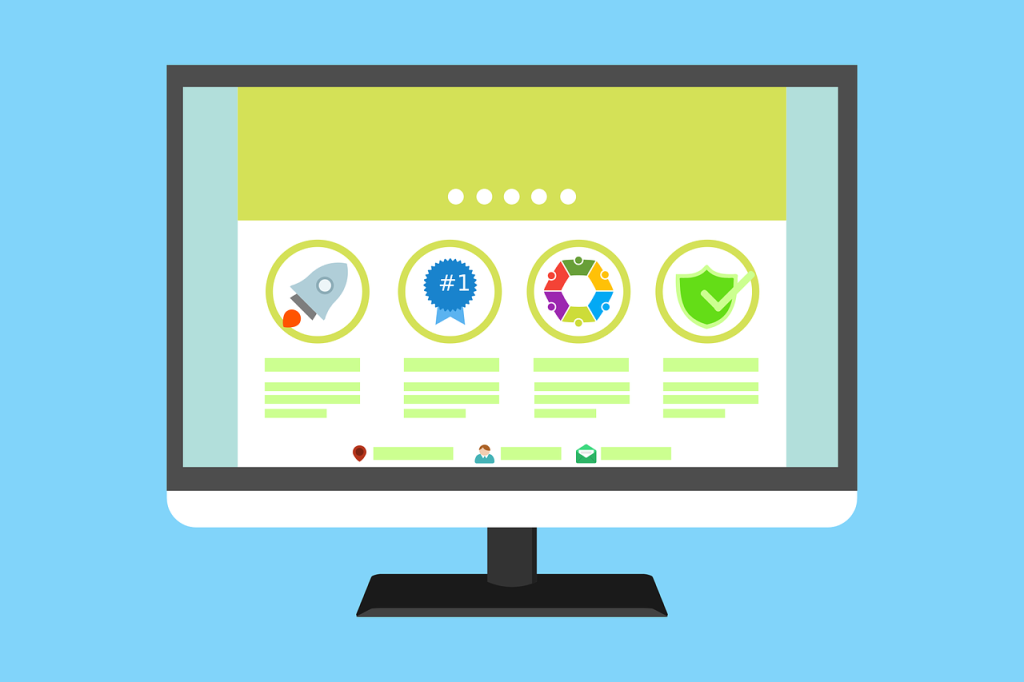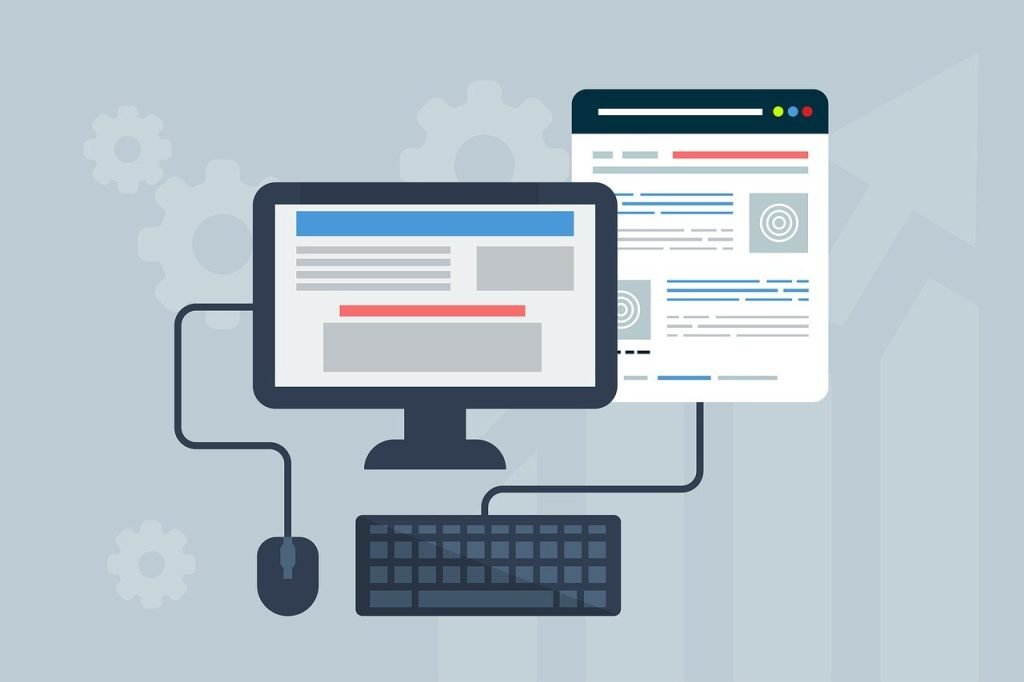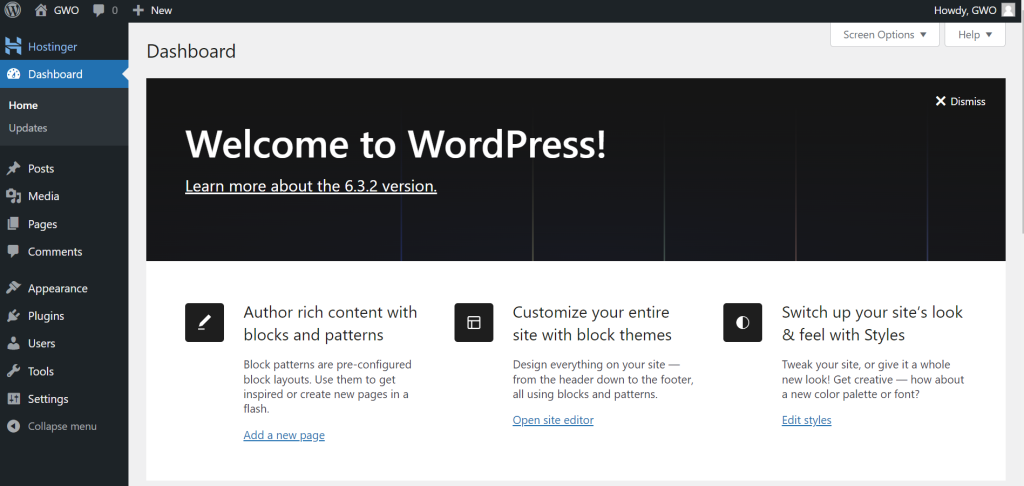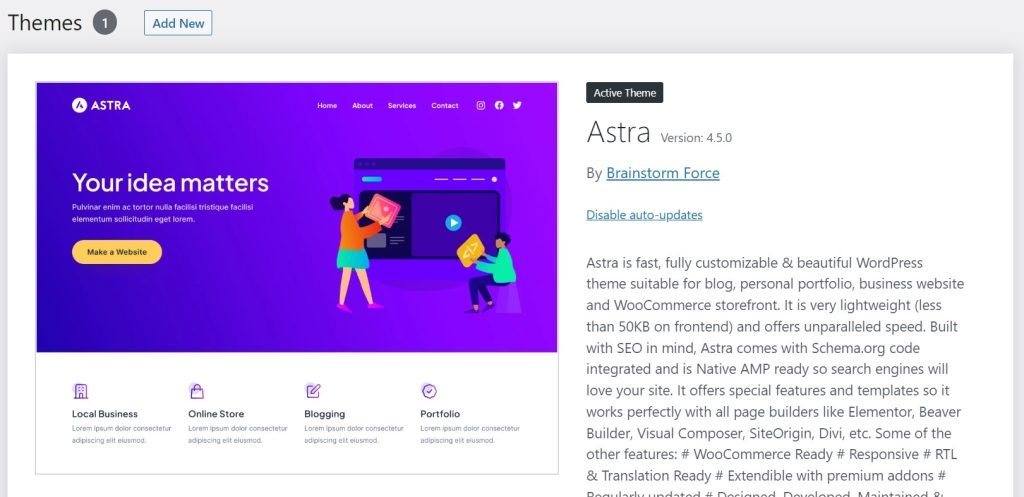Creating a captivating online presence with domain, hosting, and WordPress website, is now accessible to anyone, even those without coding skills or prior design knowledge.
This blog is tailored for novices looking to acquire web design skills for future career prospects or to effectively manage their own websites.
Introduction
A website is a collection of web pages and digital content that are accessible over the internet through a specific web address, typically starting with “http” or “https.” These web pages are interconnected and designed to convey information, provide services, or promote products and can include various types of content, such as text, images, videos, hyperlinks, and interactive elements.
Websites serve a multitude of purposes, ranging from personal blogs and informational sites to e-commerce platforms, social media networks, and business websites. They are hosted on web servers, which store the website’s files and make them available to users when they access the website’s URL in a web browser.
A website can be a single page or consist of numerous interconnected pages, forming a website structure or sitemap. These pages are organized into sections, often with a homepage providing an entry point and links to various content areas. Websites are designed to be accessible to users across different devices and screen sizes, ensuring a consistent and user-friendly experience. They play a vital role in the digital landscape, serving as a platform for communication, information sharing, commerce, and online interaction.
Basic Requirements for Website Development
To embark on a website design series and create your own beautiful website, you’ll need the following basic requirements:
- Computer Connected to the Internet and Basic Computer Knowledge:
• Access to a computer with an internet connection is essential for building and maintaining your website. Basic computer skills, such as using a web browser and word processing software, are necessary for content creation and website management. - Time and Passion:
• Building a website requires time and dedication. You’ll need to invest time in learning, planning, designing, and maintaining your site. Passion and enthusiasm for your project will keep you motivated throughout the process. - Your Need to Have Your Own Website:
• Clearly define the purpose and goals of your website. Whether it’s a personal blog, portfolio, e-commerce site, or business platform, having a clear vision for your website’s content and functionality is crucial. - A Little Amount of Money for Domain Name and Hosting:
• To make your website accessible on the internet, you’ll need to register a domain name (e.g., www.gowideonline.com) and purchase web hosting. While there are free options available, having your own domain and hosting provides more flexibility and a professional appearance. These expenses are typically affordable and can vary depending on the domain name and hosting provider.
These fundamental requirements will provide you with the foundation to get started with your website design journey. As you progress, you may explore various website building platforms, design tools, and coding languages, depending on your skills and objectives. Whether you’re a beginner or have some experience, there are numerous resources and tutorials available to help you create a beautiful and functional website that meets your specific needs.
What is Domain Name?
A domain name is a human-readable web address that serves as the unique identifier for a website on the internet. It’s used to locate and access websites, much like a physical address helps you find a particular building or location. Domain names make it easier for users to remember and navigate to specific websites without needing to know the complex numerical IP (Internet Protocol) addresses associated with web servers.
A domain name typically consists of two main parts:
- The Second-Level Domain (SLD): This is the specific and unique name that identifies the website. For example, in the domain name “gowideonline.com,” “gowideonline” is the second-level domain.
- The Top-Level Domain (TLD): This is the rightmost part of the domain name and indicates the type or category of the website. Common TLDs include .com, .org, .net, and country code TLDs like .uk, .de, and .jp. In “gowideonline.com,” “.com” is the top-level domain.
Domain names are used for branding, marketing, and establishing an online presence. They are registered through domain registrars, which manage the allocation and administration of domain names. Once registered, the domain name becomes associated with the website’s IP address, allowing users to access the site by simply typing the domain name into a web browser.
What is Hosting?
Web hosting is a service that allows individuals and organizations to make their websites accessible and viewable on the internet. Hosting providers offer the necessary infrastructure and technologies to store and serve website files, making them accessible to users worldwide. In essence, web hosting is like renting space on a server that is connected to the internet, enabling your website to be accessible 24/7.
Here are the key components and functions of web hosting:
- Server Space: Hosting providers allocate server space to store your website’s files, including web pages, images, videos, databases, and other content.
- Server Maintenance: Hosting companies manage and maintain the servers, ensuring they are operational, secure, and updated to support your website’s needs.
- Internet Connectivity: Hosting providers maintain high-speed internet connections to ensure that your website is accessible to users without interruptions.
- Domain and DNS Management: Many hosting services also offer domain registration and management, simplifying the process of linking your domain name to your website.
- Data Backup: Hosting companies often provide regular data backups, which can be crucial for recovering your website in case of data loss or server issues.
- Security: Hosting services include security features like firewalls, antivirus software, and SSL certificates to protect your website and its data from online threats.
There are various types of web hosting, including shared hosting, VPS (Virtual Private Server) hosting, dedicated hosting, and cloud hosting, each with its own set of features and pricing structures. The choice of hosting type depends on your website’s size, traffic, and specific requirements.
Web hosting is a fundamental component for any website, ensuring that it is accessible and functional to users on the internet. It is an essential service for website owners, bloggers, businesses, and organizations looking to establish an online presence.
No Technical Skills Require
Creating a website has never been more accessible, as you don’t require any coding skills or prior knowledge of website design. Thanks to user-friendly website building platforms like WordPress, even those without technical expertise can craft stunning websites. These platforms provide intuitive drag-and-drop tools, pre-designed templates, and a wealth of plugins, allowing you to design, customize, and publish your site with ease. Whether you’re a small business owner, blogger, or anyone seeking an online presence, you can embark on your web design journey with confidence, knowing that you don’t need to be a coding whiz to bring your website vision to life.
How to Get a Domain and Hosting?
Numerous domain and hosting providers are available, and while we can’t list them all, we’ve highlighted one of the top choices. Hostinger.com is a versatile hosting provider that offers a comprehensive suite of web services, including web hosting and domain name registration. Their all-in-one platform simplifies the process of building and managing websites. Whether you’re in need of reliable hosting, a free domain name, SSL certificates for security, or access to user-friendly website building tools, Hostinger.com provides a one-stop solution for individuals and businesses looking to establish a strong online presence.
How to Get a Domain Name:
- Choose a Domain Name: First, decide on a suitable domain name for your website. It should be relevant to your content, brand, or purpose and ideally easy to remember.
- Check Domain Availability: Use a domain registrar or a hosting provider’s domain registration service to check if your desired domain name is available. You may need to try different variations or extensions if your first choice is already taken.
- Register the Domain: Once you find an available domain name, register it through a domain registrar or hosting provider. Typically, you’ll need to create an account, provide your contact information, and complete the registration process. Some hosting providers, like Hostinger, offer free domain names as part of their hosting packages.
How to Host Your Website:
- Choose a Hosting Provider: Select a hosting provider, such as Hostinger, that meets your website’s needs in terms of storage, bandwidth, performance, and features. Many hosting providers offer a range of hosting plans, so choose one that aligns with your website’s requirements and budget.
- Purchase a Hosting Plan: Sign up for a hosting plan with your chosen provider. This usually involves selecting a plan, entering your payment information, and creating an account.
- Configure Your Domain: If you registered your domain separately, you’ll need to configure it to work with your hosting. This typically involves updating the domain’s DNS (Domain Name System) settings to point to your hosting provider’s servers. If you received a free domain from your hosting provider, this step may already be taken care of.
- Upload Your Website: Use FTP (File Transfer Protocol) or a hosting control panel to upload your website’s files to your hosting server.
- Set Up Your Website: If you’re using a website builder like WordPress, you can install it on your hosting server using one-click installation tools provided by your hosting provider. This makes it easy to create and manage your website.
- Test Your Website: Before publishing it to the world, thoroughly test your website to ensure that everything is working correctly.
- Publish Your Website: Once you’re satisfied with your website, it’s time to publish it to the world. Visitors can access your site using your domain name, which will resolve to your hosting server.
With domain registration and web hosting in place, your website is ready to be accessed by users on the internet. Make sure to secure your website with additional services like SSL certificates for data encryption and back up your data regularly to ensure its safety and reliability.
How to Get to Website Customization Dashboard – WordPress Dashboard?
Hostinger’s user-friendly dashboard is designed to simplify the website creation process. It offers easy WordPress installation, allowing users to set up a WordPress website with just a few clicks. Once installed, the dashboard also provides a convenient direct switch to the WordPress admin dashboard. This streamlined process ensures that users can quickly get started with website design and content management, making it an excellent choice for both beginners and experienced website builders.
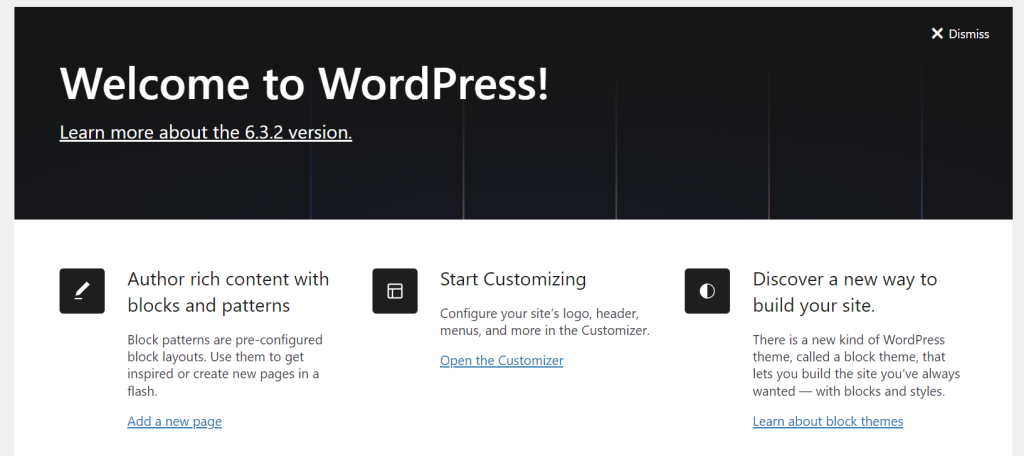
What is Next?
In the next chapter, we will guide you on selecting a WordPress theme, essential plugins, and customizing your website to meet your specific needs, enabling you to design it as if it were truly your own.

